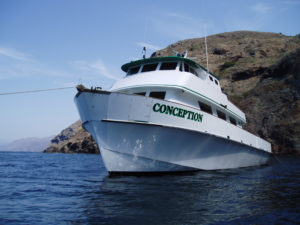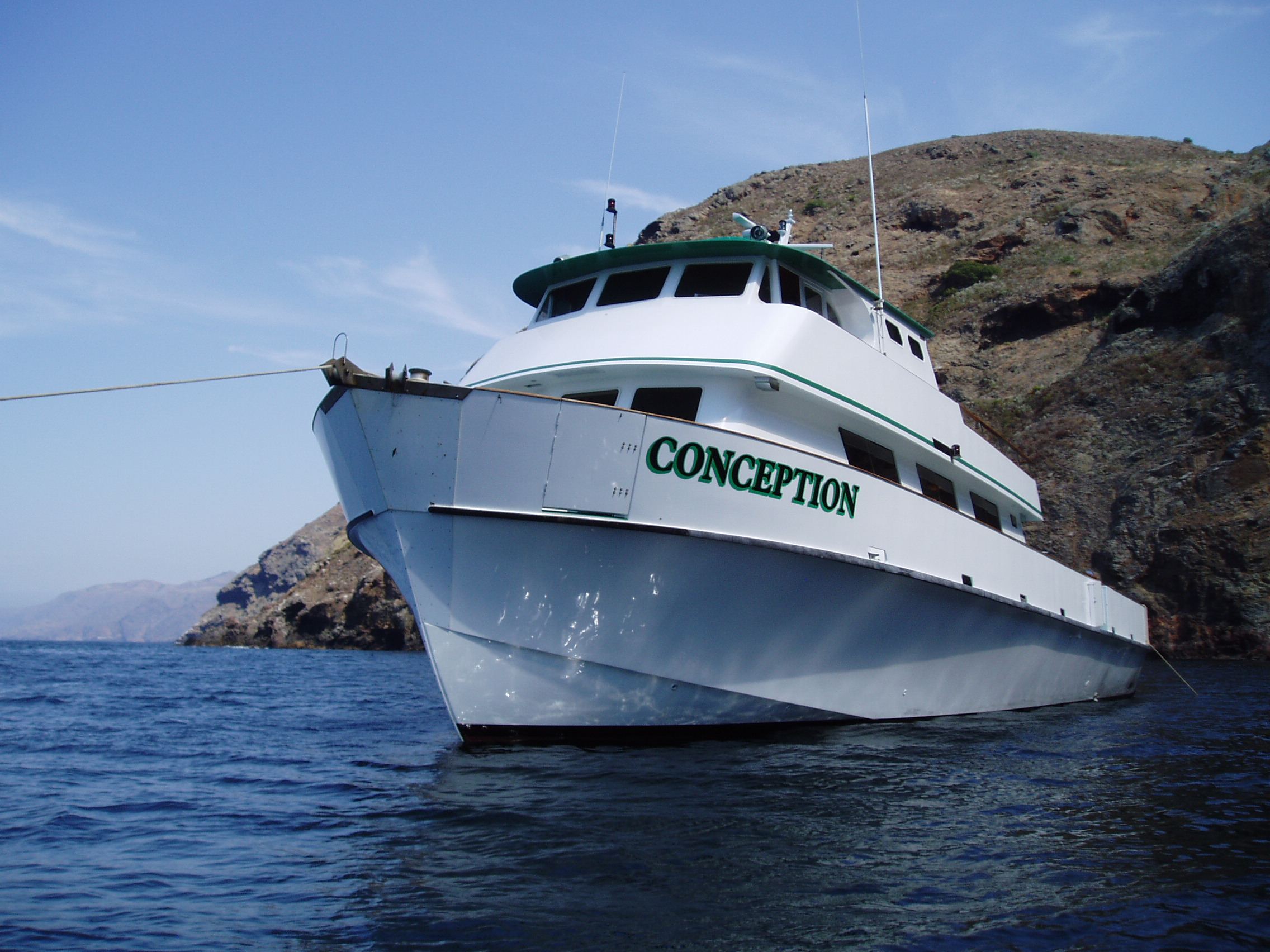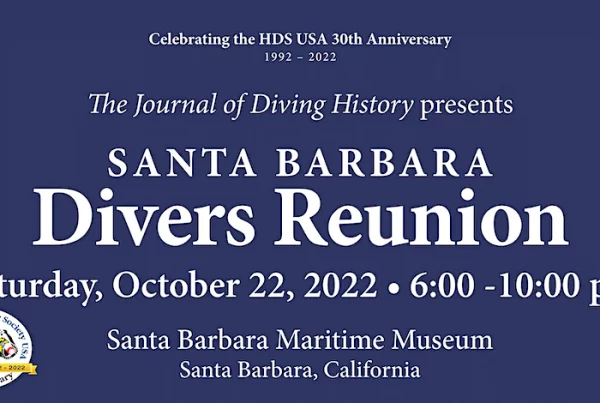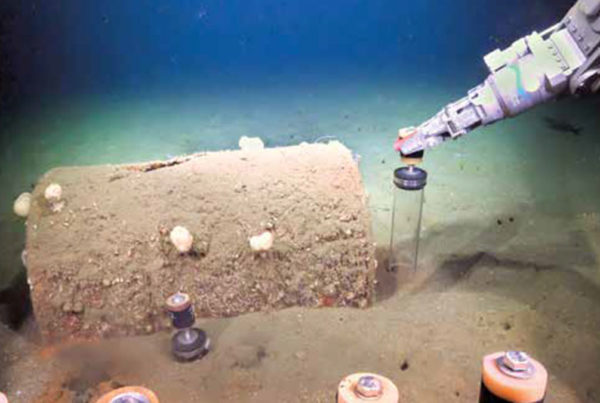 Early on the morning of September 2, 2019 the Truth Aquatics live-aboard dive boat, Conception, caught fire while anchored off Santa Cruz Island, California. Flames prevented five crewmembers who were on the top deck from reaching the stairs or emergency hatch to free those asleep below. Tragically, all 33 passengers and one crewmember who were sleeping in the bunk room below deck perished.
Early on the morning of September 2, 2019 the Truth Aquatics live-aboard dive boat, Conception, caught fire while anchored off Santa Cruz Island, California. Flames prevented five crewmembers who were on the top deck from reaching the stairs or emergency hatch to free those asleep below. Tragically, all 33 passengers and one crewmember who were sleeping in the bunk room below deck perished.
The critically damaged Conception sank in 64 feet of water a few hours after the fire started. Recovery of the remains took several days then the Conception was raised and removed to a secure site so that it could be studied.
The National Transportation Safety Board (NTSB) is handling the investigation into the cause of the fire and may take over a year to reach a final determination. However, the NTSB has stated that they are “100 percent” confident that they would determine how and why the fire began, which would be needed to help prevent such an event from happening in the future. However, in light of the severity of this the U.S. Coast Guard issued a Marine Safety Information Bulletin that recommended that owners, operators and masters of passenger vessels immediately complete the following:
• Review the routes and conditions listed on the vessel’s Certificate of Inspection (COI) including the number of passengers and overnight passengers permitted. Ensure crewmembers are aware of and clearly understand their obligations including any additional requirements detailed on the COI.
• Review emergency duties and responsibilities with the crew and any other crewmember in a safety sensitive position to ensure they comprehend and can comply with their obligations in an emergency to include the passenger safety orientation. Ensure emergency escapes are clearly identified, functional, and remain clear of objects that may impede egress.
• Review the vessel log book and ensure records of crew training, emergency drills, and equipment maintenance are logged and current. Additionally, it is recommended that the master complete log entries to demonstrate to the Coast Guard that the vessel is operating in compliance with routes and conditions found on the COI.
• Ensure all required firefighting and lifesaving equipment is onboard and operational.
• Reduce potential fire hazards and consider limiting the unsupervised charging of lithium-ion batteries and extensive use of power strips and extension cords.
• Review the overall condition of the passenger accommodation spaces and any other space that is readily available to passengers during the voyage for unsafe practices or other hazardous arrangements.










